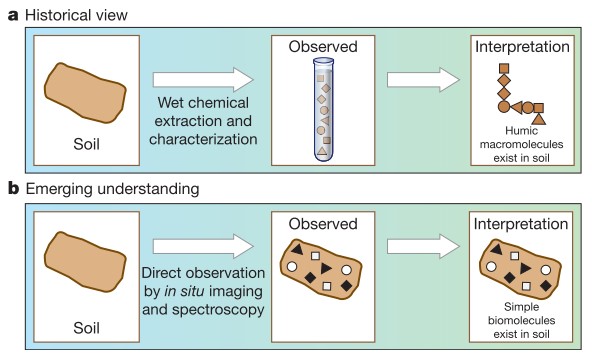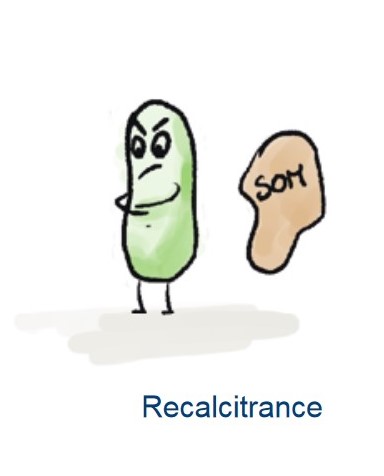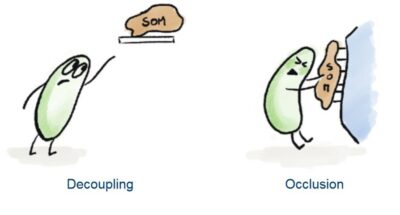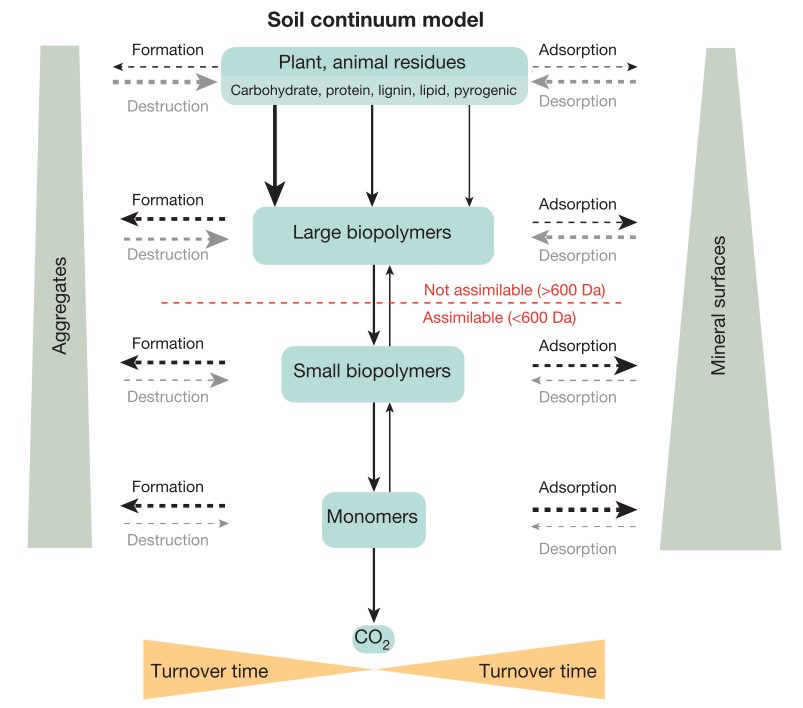Background
Soil carbon sequestration describes the process of storing carbon in soils for a long period of time. Especially in the face of climate change and the search for possibility to remove greenhouse gases of the atmosphere, soils have gotten more attention. Besides the high expectations policy makers and scientist have on soils, they are also under pressure by human activities. Soils have been storing carbon for many years and while on the one hand efforts are undertaken to increase their capacity to take up CO2, on the other hand they release the carbon they stored over thousands of years.
This needs to be kept in mind when talking about hiding emissions in the soil: It is not given that the carbon stays there forever and besides trying to enhance soils ability to take up CO2, we must also stop activities elsewhere to not endanger their carbon storage capacity.
Posts on this topic
Benefits
To combat climate change, the idea of storing carbon in the soil is very attractive and at also seems to be a simple method to capture carbon. In contrast to technological innovations which aim to store carbon in rocks for example, the storage in the soil does not require the same amount of energy. Furthermore, increasing the amount of carbon in the soil also means to improve the soil quality and fertility.
More carbon in the soil means that the soil can better stick together and erosion becomes less likely or severe. Furthermore, the soil organism community gets more diverse, contributing to nutrient cycling in the soil and thus providing plants with more food to grow. Organic material can also improve the water holding capacity of the soil because it creates pore spaces for the water to be held in the soil without being lost to the subsoil because of gravity.
Controversies
Especially in agricultural settings, the possibility to increase yield because of improved soil conditions seems promising to ensure food security. However, there are still a lot of open questions about the way carbon is stored in the soil as you can see below.
Furthermore, we do not know for how long the carbon will be stored in the soil and whether measures to increase carbon in the short term will increase CO2 emissions from the soil in the long term.

The controversy about carbon sequestration in soils have their roots in the organic matter research. Until the 1980s, instruments to study soil organic matter adequately did not exist and therefore chemical extraction was performed and it was assumed that the result reflected the characteristics of soil organic matter. New analysis methods allowed for a direct observation of organic matter.
Image source: Schmidt et al., 2011.

The former analysis method led to the believe that soil organic matter consists of complex molecules (called humic macromolecules in the image above) which cannot be decomposed by microorganisms. Thus, carbon would be stable in the soil because microbes do not want to eat this complex organic matter as the energy requierements are too high.
Image source: Karen Vancampenhout, 2020.

However, direct observation of soil organic matter shifted the view on carbon sequestration as it was seen that also very simple soil organic matter
molecules (which should be easily decomposed by microbes) can be quite stable in the soil. Scientists searched for reasons for these counterintuitive findings and The Soil Continuum Model contradicts these believes and traces the
long persistence of some organic matter back to the fact that it cannot be reached by microbes. It is occluded in aggregates or decoupled.

Lehmann and Kleber (2015) incorporated these observations in their soil continuum model. This model claims that the persistence of soil organic matter is governed by the physical properties of the soil rather than the characteristics of the organic matter sources. According to this model, plant an animal residues are decomposed by soil organisms in case they can access them.
Image Source: Lehmann and Kleber, 2015.
